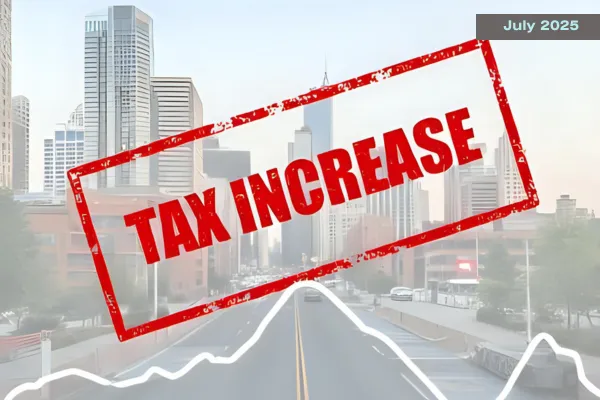
What Victoria’s New Property Tax Hike Means for Homeowners and Investors
Introduction
From 1 July 2025, property owners across Victoria will begin feeling the impact of a significant tax increase introduced under the newly expanded Emergency Services and Volunteer Fund (ESVF). This change affects residential homeowners, investors, commercial property owners and farmers. In some cases, it could double or even triple annual property tax bills. Whether you already own property, are building an investment portfolio, or are preparing to buy your first home, it is now essential to understand how these changes may affect you.
What Is the Emergency Services and Volunteer Fund (ESVF)?
The ESVF is the Victorian Government’s expanded replacement for the Fire Services Property Levy (FSPL). While the FSPL was designed to support core fire safety agencies, the ESVF has a broader purpose. It will fund a wide range of emergency services including the Country Fire Authority (CFA), Fire Rescue Victoria, Emergency Management Victoria and Triple Zero Victoria. The Government has introduced this tax to help reduce the state’s rising debt, which is projected to reach $194 billion by 2028.
Key Tax Changes and Who Is Affected
Under the new structure, property tax rates across Victoria are set to increase sharply. For homeowners, the charge will rise from 8.7 cents to 17.3 cents per $1,000 of property value, representing a 99% increase. Commercial property owners will see rates increase from 66.4 to 133 cents. Industrial property levies will rise from 81.1 to 133 cents. For farmers, the increase is even higher, climbing from 28.7 to 71.8 cents per $1,000, which amounts to a 150% rise.
To put this into perspective, a family home valued at $1 million could face an additional $10,000 in tax each year. This is not a minor adjustment. It is a financial change that will affect thousands of property owners across the state.
Why the Government Is Introducing This Tax
The Victorian Government argues that this tax is necessary to address the state’s significant debt and ensure sustainable funding for emergency services. In the 2024 fiscal year, the state collected approximately $600 million in property levies. With the ESVF in place, the goal is to raise $1.6 billion. The additional revenue will help fund frontline services, but it will also place added pressure on everyday homeowners and investors.
Implications for Property Investors
For investors, the tax hike could create a ripple effect across their portfolios. Higher holding costs may reduce rental yield, especially for those with multiple properties. Increased fixed expenses could also impact borrowing capacity, with lenders likely to reassess how much investors can borrow based on their new annual outgoings.
This could push some investors to hold off on buying more property, consider selling part of their portfolio, or shift their focus to markets outside Victoria. For those continuing to invest, being strategic and factoring in total cost of ownership is now more important than ever.
What About First-Time Buyers?
For first-time buyers, this change does not directly affect purchase price, but it does increase the cost of ownership. Budgeting for council rates and maintenance has always been important, but now, annual property taxes need to be considered too.
It is also worth noting that increased property-related costs can impact loan servicing calculations. Buyers may find their borrowing capacity is slightly reduced due to lenders factoring in higher ongoing costs. That said, those who are well-prepared can still find success. Clarity around your finances and realistic planning will go a long way in adjusting to the new environment.
Rebates for Emergency Volunteers
Some property owners will be eligible for partial relief. CFA and Victoria State Emergency Service (VICSES) volunteers may receive rebates on their principal place of residence or farm, provided property values do not exceed $5 million. The maximum rebate is $3,865. However, this applies only to a select group and will not significantly offset the broader financial impact for most families.
What Can You Do About It?
Short of relocating interstate, the best course of action is to be proactive. Speak to your financial advisor or accountant to understand how this increase will affect your property costs and investment strategy. There may be ways to optimise your portfolio, such as restructuring ownership or re-evaluating which properties are delivering the best performance.
There is also the option to join others who are pushing back against the tax hike. Community members are being encouraged to write to local councillors and MPs, formally opposing the changes. While it remains to be seen if this will influence government policy, collective action can still raise awareness and promote broader public discussion.
Should You Still Invest in Victoria?
Despite the new tax burden, Victoria continues to be one of Australia’s most resilient property markets. Its population growth, job opportunities and infrastructure investment provide long-term value for buyers and investors. The key is to approach investment with a clear strategy. If you are factoring in the full cost of ownership, including tax, rates and maintenance, you can still make strong decisions that align with your financial goals.
Final Thoughts
The new ESVF levy will affect most Victorian property owners, with varying degrees of impact depending on the type and value of property owned. For homeowners, it means higher annual costs. For investors, it could reshape cash flow, yield and borrowing capacity. For first-time buyers, it adds an extra layer of planning.
The best way to respond is not with fear, but with clarity. Know where you stand, prepare for the changes and adapt accordingly.
If you're unsure how this may affect your ability to invest in property, take our free Property Readiness Tool. In just two minutes, you'll receive a personalised readiness score and action plan. It’s clear, quick and designed to help you make your next move with confidence.
👉 Get Your Score Here!
